In the 'then and now' pair of images above, the half-thatched building to the right of Drummochy House (the tallest house with bay windows in the newer image) has been replaced with garages. For a time, the space where the old house once stood was a gap site. The photograph below shows that in that space there was a distinctive statue - the bust of a man on a plinth.
It seems likely that the demolition of the old half-thatched house coincided with the construction of Burnbrae Terrace, pictured above, built for Benjamin Philp (who died in 1892). In fact several old buildings in Drummochy have been lost since the mid-1850s when the railway arrived in Largo. While many new homes were built to the north of the railway line - along Woodlands Road as well as at Burnbrae Terrace (to the left of the word 'viaduct' on the map below) - all the homes circled in red on the lower map had disappeared by 1912.
Among the changes were the replacement of two ruinous cottages on feu number 40 with the detached villa 'Fernbank'. The photograph below shows the contrast between the remaining older houses at the lower level and the new villas of Woodlands Road at the top, and 'Fernbank' in the centre.
Other lost buildings are the dark coloured ones to the left of centre in the background of the George Washington Wilson photograph below. Remains of the old walls of these structures can still be seen at the site on Cellar Brae by the benches. The tall building looks virtually identical Drummochy House being the same height, design and orientation. The modern day aerial image at the foot of this post shows the continued evolution of this area on both sides of the burn, with many old buildings replaced and gap sites filled, including some across the former path of the railway line, the old gas works and the former mill site.
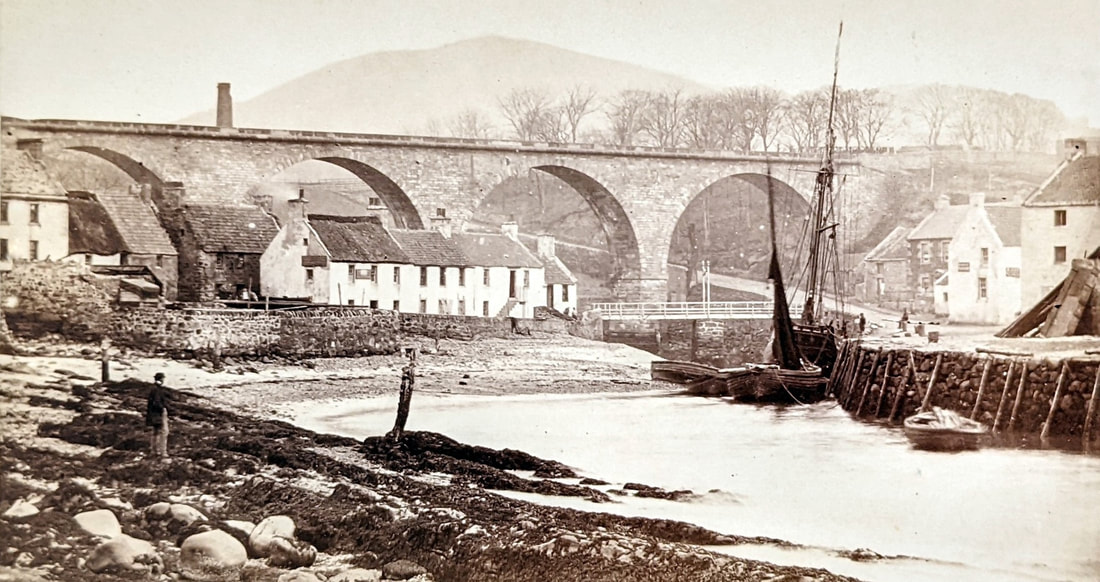
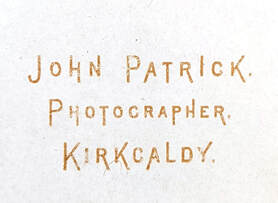
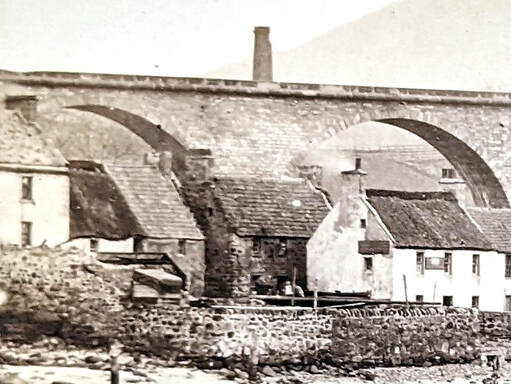
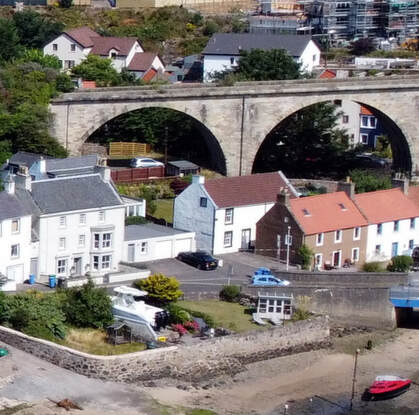
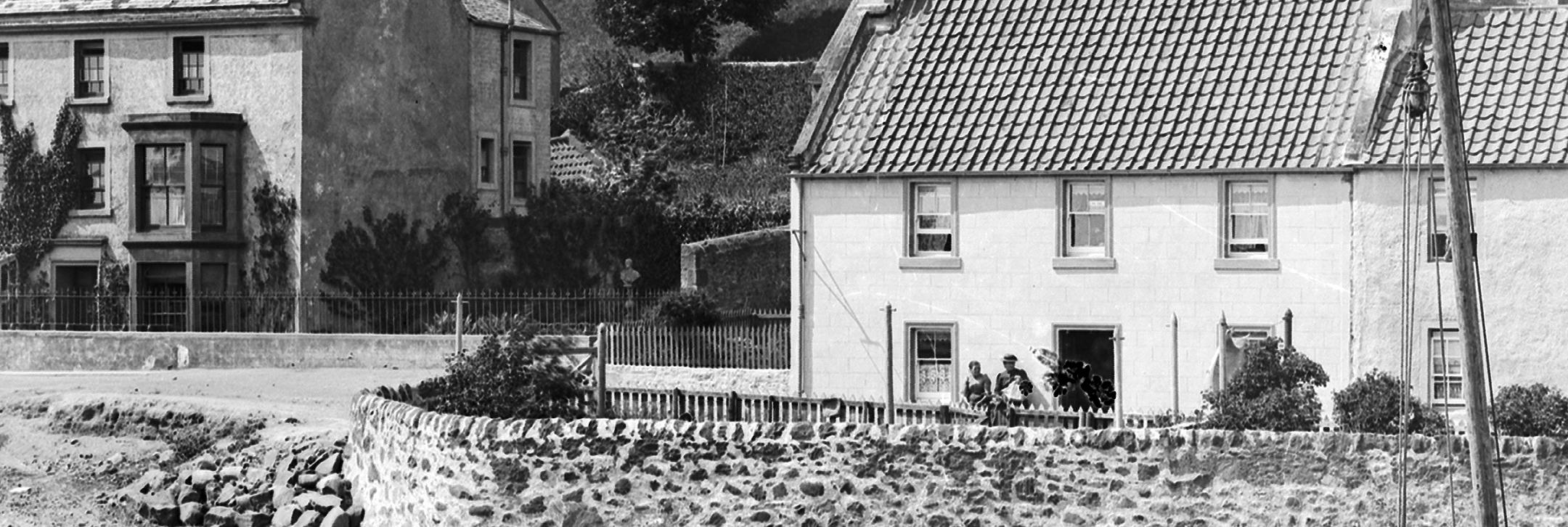
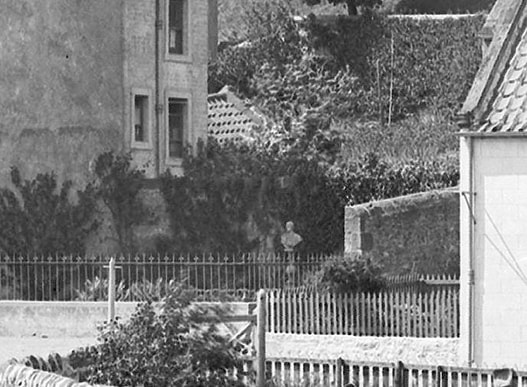
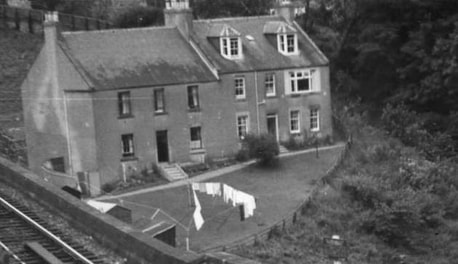
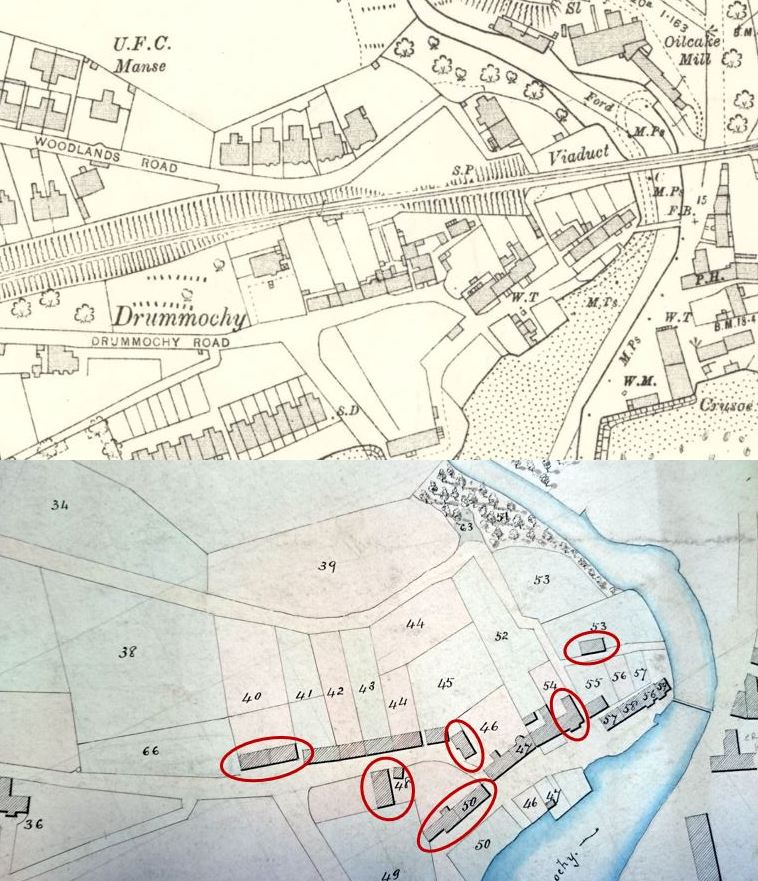
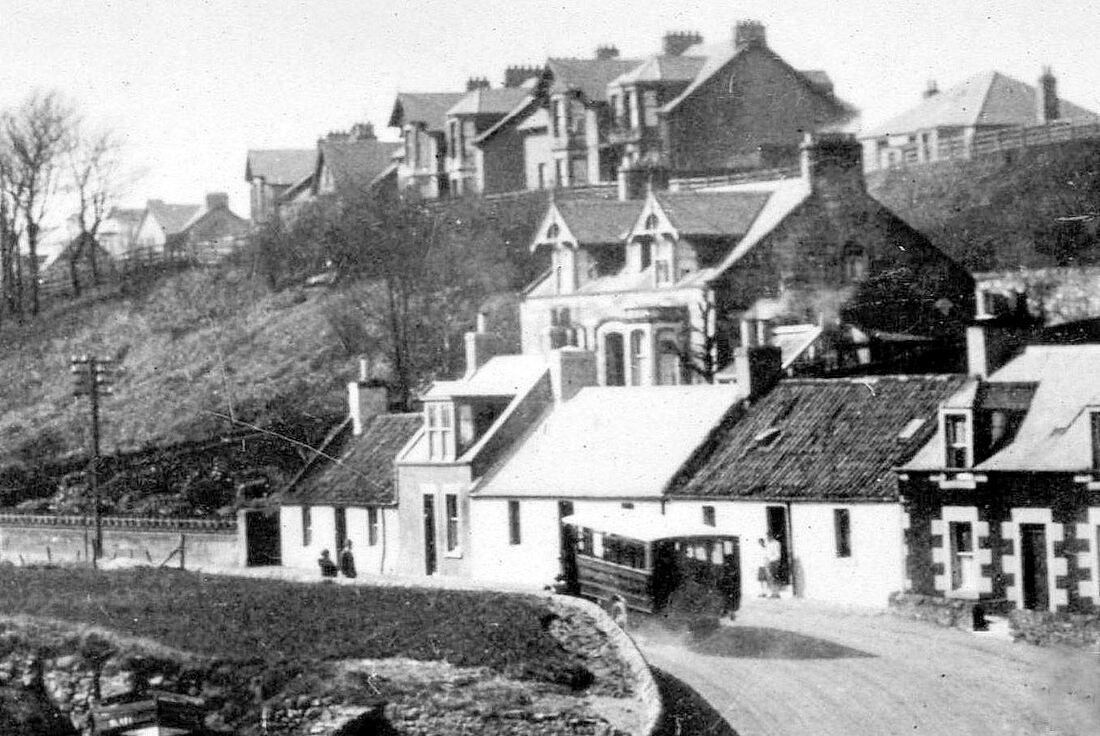
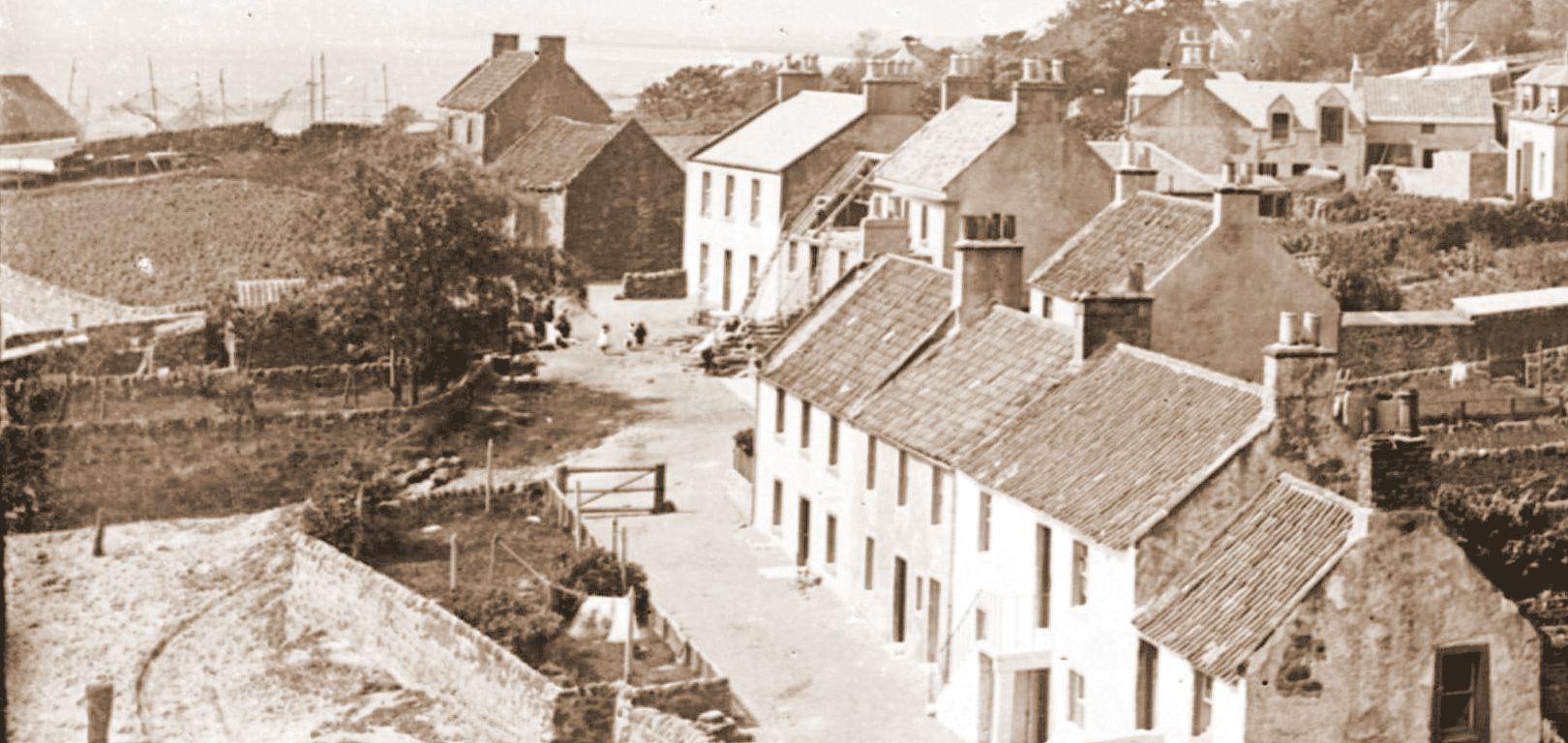
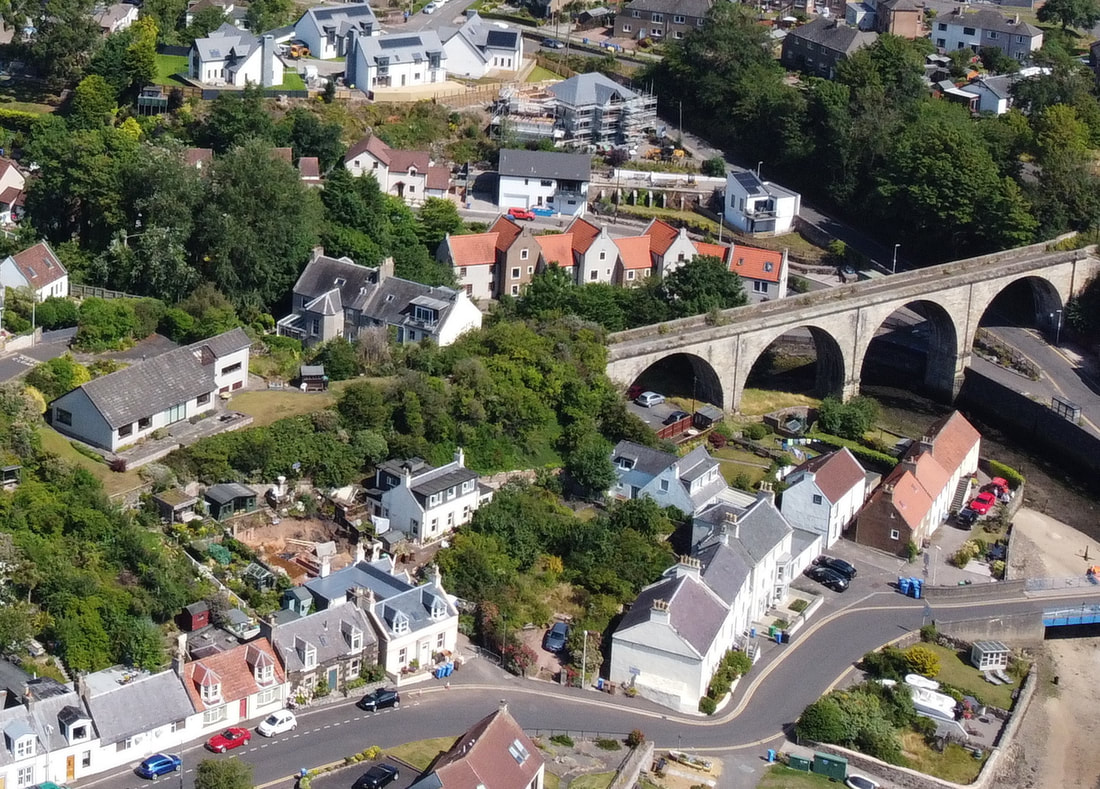
 RSS Feed
RSS Feed
